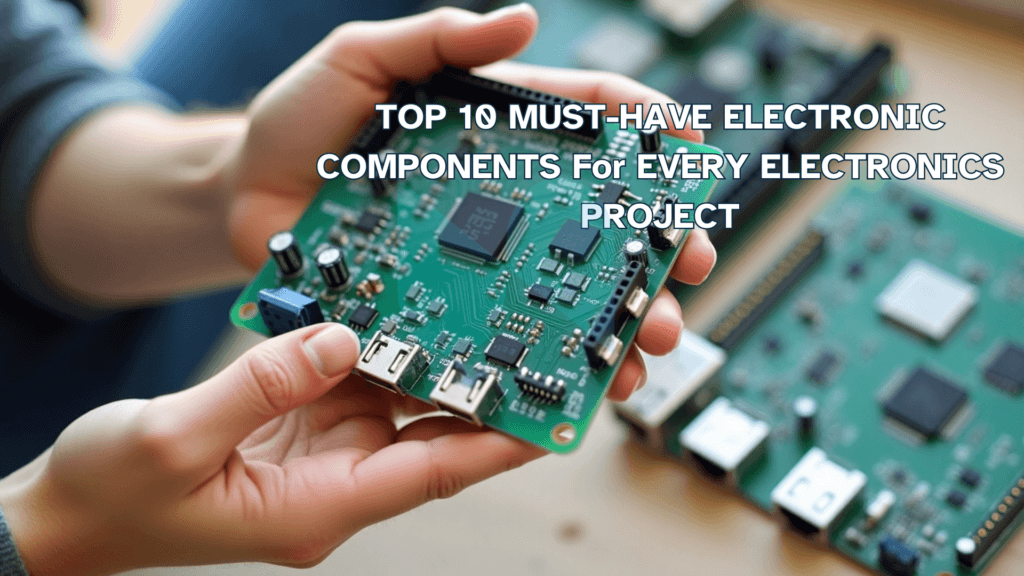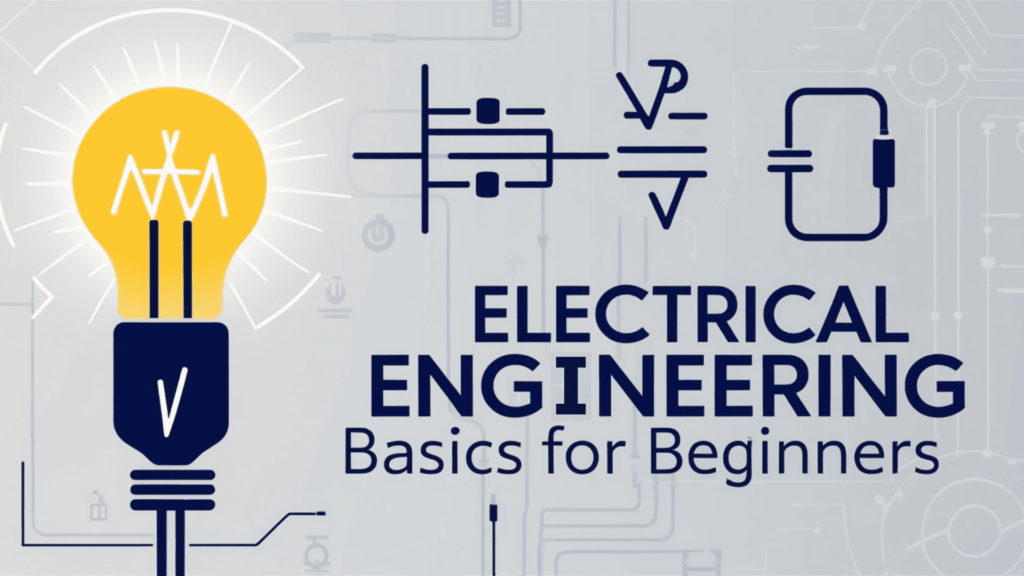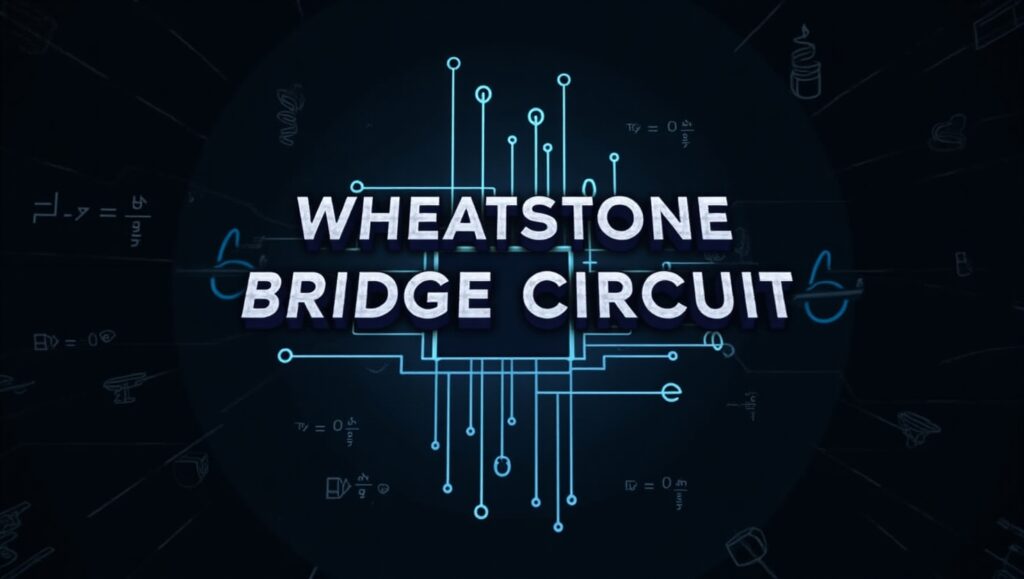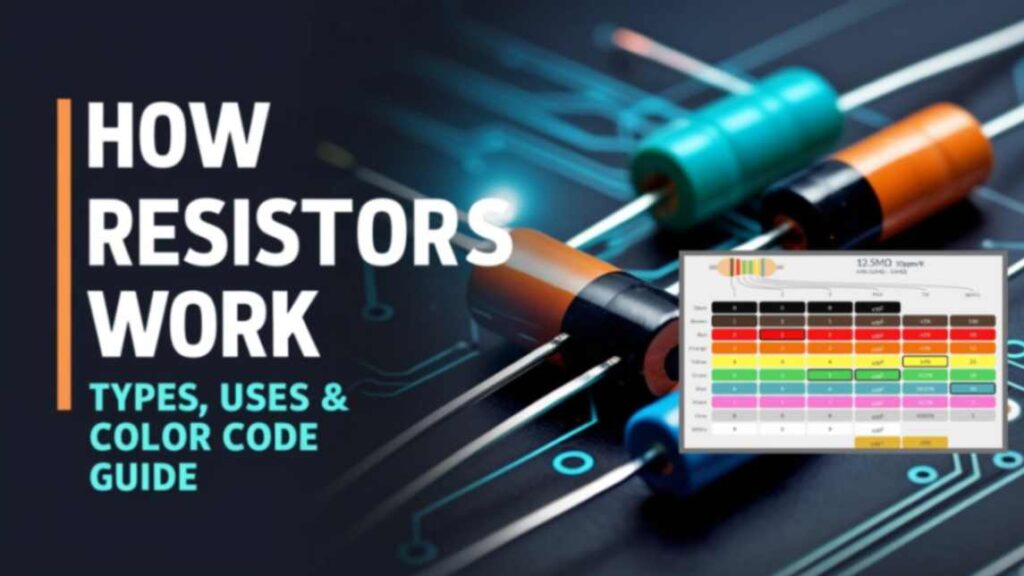
Embarking on an electronics project is both exciting and rewarding. Whether you’re a hobbyist, student, or professional, having a solid understanding of essential electronic components is crucial. This guide delves into the top 10 components that form the backbone of most electronic circuits, providing you with the knowledge to build and innovate confidently.
1. Resistors: The Current Managers
Function: Resistors limit the flow of electric current, protecting sensitive components from damage. They play a fundamental role in nearly every electronic circuit, ensuring that components receive the appropriate amount of current.
Applications:
- Voltage Division: Creating specific voltage levels within a circuit.
- Current Limiting: Protecting LEDs and microcontrollers from excessive current.
- Signal Conditioning: Adjusting signal levels in communication circuits.
- Pull-up/Pull-down Resistors: Ensuring stable logic levels in microcontroller circuits.
Tip: Keep a variety of resistor values on hand to accommodate different circuit requirements.
2. Capacitors: Energy Storage Experts
Function: Capacitors store and release electrical energy, helping to smooth out voltage fluctuations and stabilize power supply lines. They are widely used for noise filtering, energy storage, and signal processing.
Applications:
Power Supply Filtering: Reducing noise and stabilizing voltage in power supplies.
Timing Circuits: Working with resistors to set time constants in oscillators.
Coupling and Decoupling: Blocking DC components while allowing AC signals to pass.
Energy Storage: Used in camera flashes and backup power supplies.
Tip: Use ceramic capacitors for high-frequency applications and electrolytic capacitors for higher capacitance needs.
3. Diodes: One-Way Conductors
Function: Diodes allow current to flow in one direction only, preventing potential damage from reverse currents. They are widely used for protection and signal control.
Applications:
Rectification: Converting AC to DC in power supplies.
Protection: Safeguarding circuits from voltage spikes (e.g., flyback diodes in inductive loads).
Signal Demodulation: Extracting audio signals from radio frequencies.
Light Emission: LEDs (Light Emitting Diodes) generate light using diode technology.
Tip: Understand the specifications of different diodes, such as forward voltage and maximum current ratings, to choose the right one for your application.
4. Transistors: The Amplifiers and Switches
Function: Transistors can amplify signals and act as electronic switches. They form the building blocks of digital circuits, enabling complex logic operations and power control.
Applications:
Signal Amplification: Boosting audio signals in speakers.
Switching: Controlling high-power devices like motors with low-power signals.
Oscillators: Generating repetitive signals in communication systems.
Logic Gates: Forming the foundation of microprocessors and digital logic circuits.
Tip: Familiarize yourself with both Bipolar Junction Transistors (BJTs) and Field-Effect Transistors (FETs) to leverage their unique characteristics.
5. Inductors: Magnetic Field Creators
Function: Inductors store energy in a magnetic field when electrical current flows through them. They are crucial in applications involving energy conversion and signal processing.
Applications:
Filters: Removing unwanted frequencies in power supplies and radio communications.
Energy Storage: In switch-mode power supplies for efficient energy transfer.
Sensors: Detecting metal objects in proximity sensors.
Wireless Power Transmission: Used in wireless charging systems.
Tip: Be mindful of the inductor’s core material and inductance value to ensure it meets your circuit’s requirements.
6. Microcontrollers: The Brains of the Operation
Function: Microcontrollers are compact integrated circuits that govern the operation of embedded systems. They serve as the central processing unit in automation and control applications.
Applications:
Automation: Controlling processes in home automation systems.
Data Processing: Handling inputs from sensors and executing programmed instructions.
Communication: Interfacing with other devices via protocols like I2C, SPI, and UART.
IoT Applications: Powering smart devices and connected systems.
Tip: Start with user-friendly platforms like Arduino to grasp microcontroller programming before advancing to more complex systems.
7. Sensors: Environmental Interpreters
Function: Sensors detect changes in the environment and convert them into electrical signals. They form the backbone of automation and IoT applications.
Applications:
Temperature Monitoring: Using thermistors in climate control systems.
Motion Detection: Employing PIR sensors in security systems.
Light Sensing: Utilizing photodiodes in automatic lighting controls.
Proximity Sensing: Used in touchless interfaces and obstacle detection.
Tip: Ensure compatibility between the sensor’s output signal and your microcontroller’s input requirements.
8. Relays and Switches: Control Interfaces
Function: Relays and switches enable control over the connection and disconnection of circuits, allowing for electrical isolation and automation.
Applications:
Isolation: Using relays to control high-voltage circuits with low-voltage signals.
User Input: Implementing switches as manual inputs in user interfaces.
Safety: Incorporating emergency stop switches in machinery.
Smart Home Automation: Used in Wi-Fi or Bluetooth-controlled switches.
Tip: Consider the voltage and current ratings of relays and switches to match them appropriately with your circuit.
coefficient for applications requiring high precision.
9. Crystal Oscillators: Timekeepers
Function: Crystal oscillators provide precise timing signals for synchronous operations, ensuring stability and accuracy in electronic devices.
Applications:
Clock Generation: Providing timing for microprocessors and digital circuits.
Frequency Control: Stabilizing frequencies in communication transmitters and receivers.
Timekeeping: Maintaining accurate time in real-time clocks.
RF Applications: Ensuring stable frequency references in radio transmitters.
Tip: Pay attention to the oscillator’s frequency stability and temperature
10. Printed Circuit Boards (PCBs): Structural Foundations
Function: PCBs mechanically support and electrically connect electronic components using conductive pathways. They offer stability, reliability, and efficient circuit layouts.
Applications:
Prototyping: Developing and testing circuit designs before mass production.
Compact Design: Reducing the size and complexity of electronic devices.
Reliability: Enhancing the durability and performance of circuits.
High-Speed Circuits: Used in advanced digital communication systems.
Tip: Utilize PCB design software to create layouts that optimize space and minimize signal interference.
Equipping yourself with these ten essential electronic components will prepare you to tackle a wide range of electronics projects. Understanding their functions and applications not only enhances your design capabilities but also fosters innovation and problem-solving skills in the field of electronics.
Call to Action: Ready to start your next electronics project? Ensure you have these components in your toolkit to build with confidence and creativity.
About Pluntx

Pluntx is India’s leading platform for electronics and 3D printing solutions, offering a wide range of products like Arduino, Raspberry Pi, drone parts, sensors, 3D printer components, and more. We also provide expert CAD design services and affordable 3D printing, starting at just ₹49. Click here to explore our extensive collection of electronics and prototyping tools. Be sure to follow us on Instagram and YouTube, where we regularly share tutorials, tips, and updates on everything from Arduino projects to drone technology. Pluntx delivers precision and quality. Our mission is to empower creativity through technology and simplify the journey from concept to creation.


